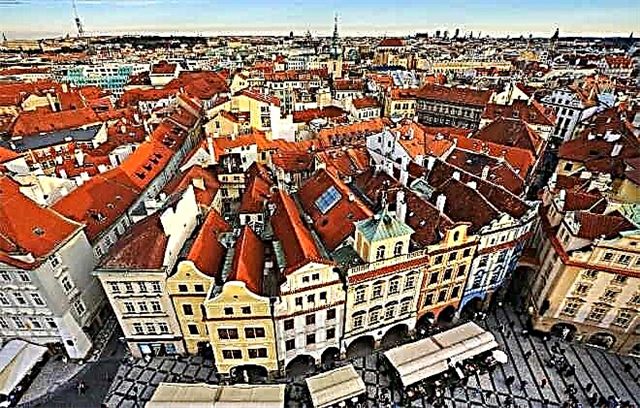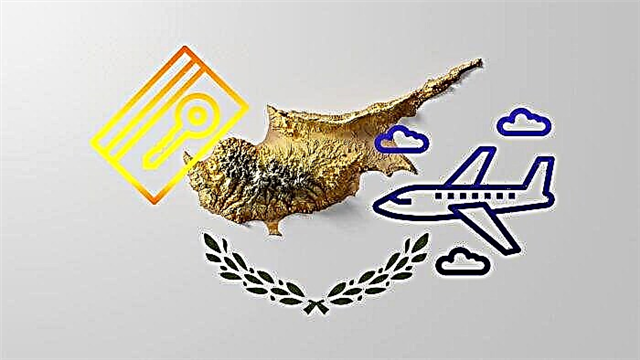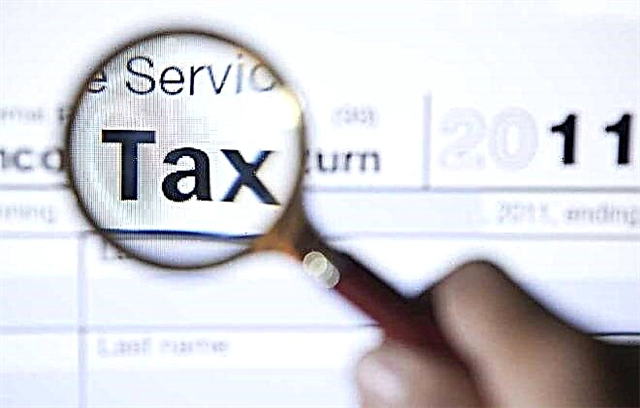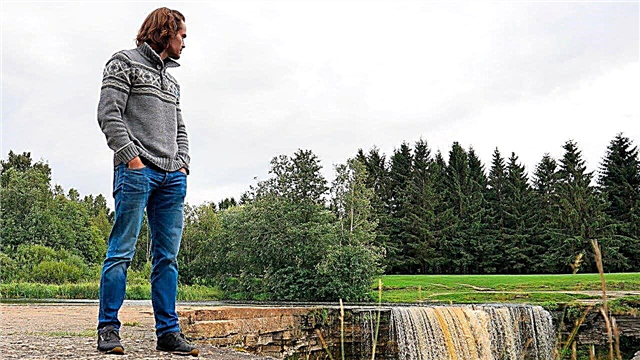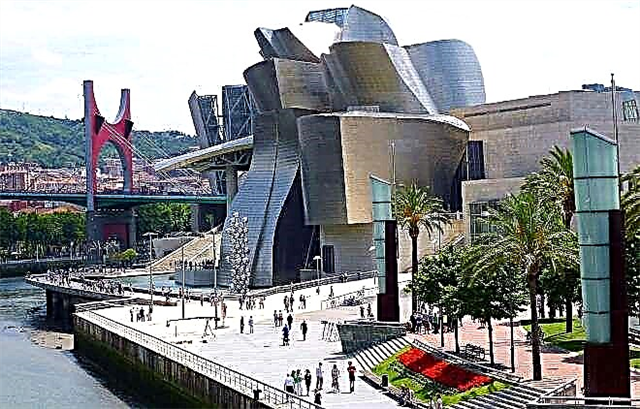The Guggenheim Museum in Bilbao is dedicated to contemporary art and covers an area of 24 thousand square meters. A variety of architectural forms are grouped around a central atrium. The main part of the collection consists of abstractions and installations, there are few traditional paintings and sculptures in the museum.

From the history
In the industrial city of Bilbao in the first half of the twentieth century, there were no special attractions, so tourists rarely came here.
In the late 1980s, when production began to decline, the question of reviving the economy by attracting tourists arose. Then the local authorities decide to change the city with the hands of famous architects of our time. It was at this time that the foundation of the world famous philanthropist Guggenheim was looking for a place to build a new museum in Europe.
Big cities, among which were Vienna, Tokyo, Salzburg and others, fought for the opportunity to get a new Guggenheim museum complex. But the foundation chose industrial Bilbao.
The museum was built by 1997. The opening ceremony was attended by King Juan Carlos I and his wife Queen Sofia.
The appearance of the museum has greatly changed the life of the city. The new cultural center is included in the list of recommended places to visit in Spain.
Interestingly, during the construction phase, the Guggenheim Museum was criticized due to the high cost of the project, but by 2021 the museum had paid off 37 times.
The famous Basque sculptor Jorge Oteiza called the building a "cheese factory" and promised that his work would never be exhibited in the museum. But he quickly changed his mind, and today his sculptures are included in the permanent exhibition.
Museum outside
For the construction of the museum building, the architect Frank Gehry, who is known for his avant-garde work, was brought in. The project created and implemented by him really turned out to be original, and the architecture of the building itself is a great example of modern art: close up it looks like a chaotic pile of shiny blocks, and from afar it resembles a ship or even a blossoming rosebud.
For the exterior, sandstone slabs, tinted glass and titanium plates were used. Layed on the principle of fish scales, they shimmer beautifully in the sun and are reflected in the water surface of the river.
The museum building looks especially impressive in the evening, when the neon lights are turned on. A cloud-making machine is installed around the perimeter. When its nozzles are started, the rear ones begin to envelop a dense fog. The glowing foggy sculpture on the river bank looks fabulous. True, this spectacle can be seen only in calm weather.

Interior and exhibits
The interior of the museum is a constantly changing space. The collection is based on works of contemporary art from the middle of the 20th century to the present day. Here you can see the works of Mark Rothko, James Rosenquist, Gerhard Richter, Andy Warhol. In the museum you can see masterpieces of contemporary Spanish artists: Eduardo Chillida, Jorge Oteiza, Antanio Saura, Juan Muñoz.
The Guggenheim Museum has many interactive exhibits that visitors can contact through video art and installations.
At the same time, works of masters whose genius has been tested by time are also exhibited in the cultural complex. There were temporary exhibitions of drawings by Michelangelo, prints by Durer from the collection of the State Hermitage.
The main interior space of the museum is a huge hall-atrium on three floors, from which halls branch off at different levels.
The third floor is occupied by a permanent exhibition with paintings by artists from the middle of the last century. Three more halls showcase works of various trends - from cubism to surrealism. Here you can see works by Picasso, Modigliani, Kandinsky and others.
Temporary exhibitions are organized on the first and second floors. For example, you can see the work of Louise Bourget there. Her installations are small spaces where you have to look through a keyhole to see a strange object that is suggestive.
The most impressive work of Richard Sery "Matter of Time" is a sculptural group that is striking in scale and weighs up to three tons. It is a kind of rounded corridors, moving in a spiral, you find yourself in a closed space.
In other rooms, you can see installations by Richard Long and Joseph Beuys.
Several rooms are occupied by works by the German artist Anselm Kiefer. When writing pictures, he uses not only paints, but also improvised materials, for example, seed husks.
The exhibition "Jumping Wolves" is impressive: 90 life-size wolves jump on a huge glass wall, beat against it, dust themselves off, walk back and jump again.
Unusual art objects
Even before entering the building, visitors understand that something unusual awaits them. The facade of the museum is guarded by a 13-meter flower puppy named Puppy. Sculptor Jeff Koons was inspired by the Scottish West Highland White Terrier breed. The "coat" of a dog consists of 70 thousand flowers. There are marigolds, marigolds, petunias, magnolias and others.
The dog changes color depending on which flowers are blooming. As soon as the flowers have faded, they are immediately replaced with new ones.
The sculpture was originally intended for an exhibition in Germany in 1992, then it was transported to Australia. The puppy was brought to Bilbao for the opening of the Museum of Modern Art, where it stands to this day.
Another installation by the American artist Jeff Koons - "Tulips" is placed under the building's canopy. But you can see it only after going to the first floor. "Tulips" are made of stainless steel and covered with colored glaze. In appearance, it seems that the flowers are made of fragile glass, which is the material for New Year's toys.
A 9-meter spider rises on the embankment. The installation is called Mama and belongs to the sculptor Louise Bourget. The artist, with a special passion for spiders, in this work reflected warm feelings for her own mother, since she was a weaver.
Behind the spider is the La Salve Bridge, with its bright red arches, by conceptual artist Daniel Buren.
You can see the sculpture "Tall Tree and Eye" by Anish Kapoor by going to the river. The installation resembles a DNA strand and consists of 73 steel balls 1 meter in diameter. The height of the sculpture is 14 meters.
Under the bridge is a sculpture depicting the leader of the Socialist Workers' Party, Ramon Rubial Cavia, who is “heading” towards the Gate of Reverence, the work of Casto Solano.

To help a tourist
The museum is located at Bilbao, Abandotbarra Etorbidea, 2.
Phone for inquiries: (+34) 94-435-90-00.
The official website of the museum: https://www.guggenheim-bilbao.eus/.
Working hours:
- Tuesday — Sunday from 10:00 to 20:00;
- July-August - also works on Monday;
- December 24 and 31 - 10:00 - 17:00;
- December 25 and January 1 - closed.
Ticket price: for adults - 16 euros, for students under 26 years old and seniors - 9 euros, for children - free.
How to get to the museum
The museum is located in the city center, so you can get to it by various types of public transport.
Buses:
- 1, 10, 13, 18 and A - stop Museo 1 / Henao;
- 13, 27, 38 and 48 - stops Alda, Recalde 31 and 11 and Alda, Recalde 12;
- 11 and 71 - La Salve / Igogailua and Campo Volantin / La Salve.
Metro: departure station - Moyua, arrival station - Ercilla-Guggenheim.
Tram: No. 7, stop Guggenheim.
Let's summarize
The Guggenheim Museum in Bilbao impresses with its architectural form. The unusual building is surrounded by original sculptures. The museum complex itself can be called one large installation.
New sculptures, paintings and other works of contemporary art periodically appear in the spacious halls.Along with the works of contemporary artists, you can see the legendary works of Michelangelo, Picasso and Durer.


